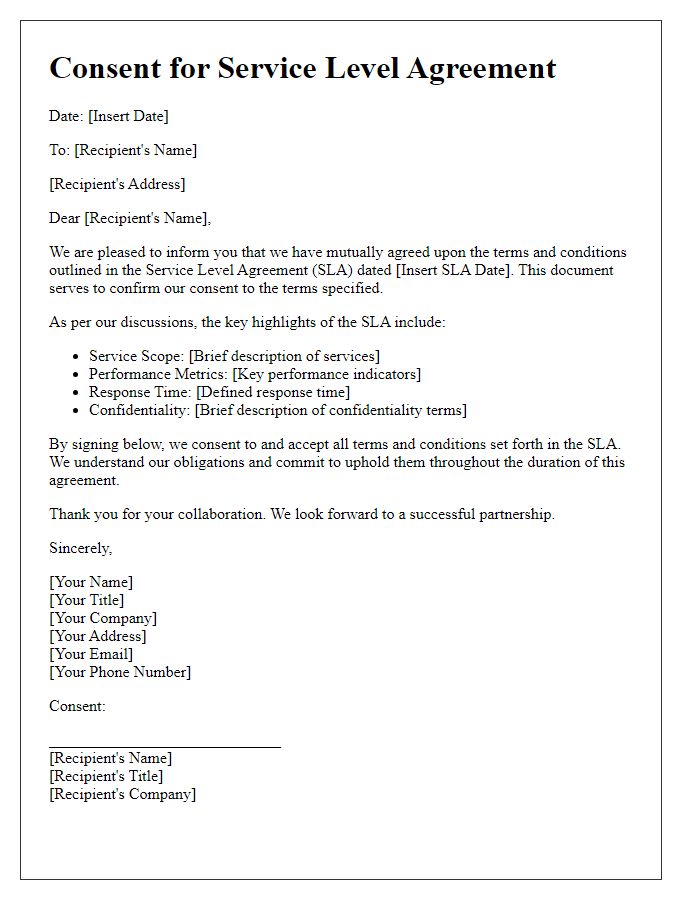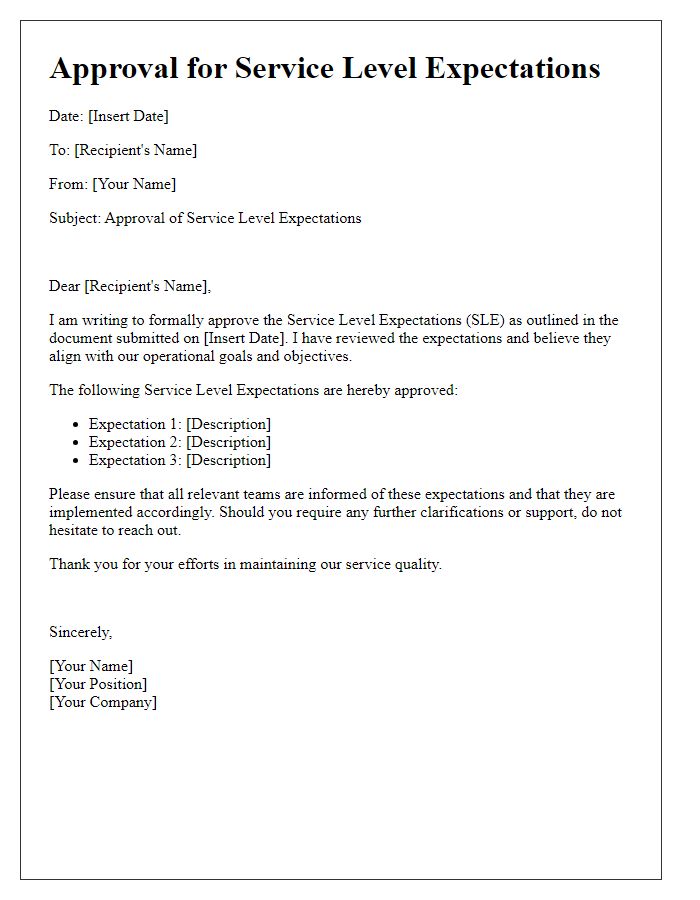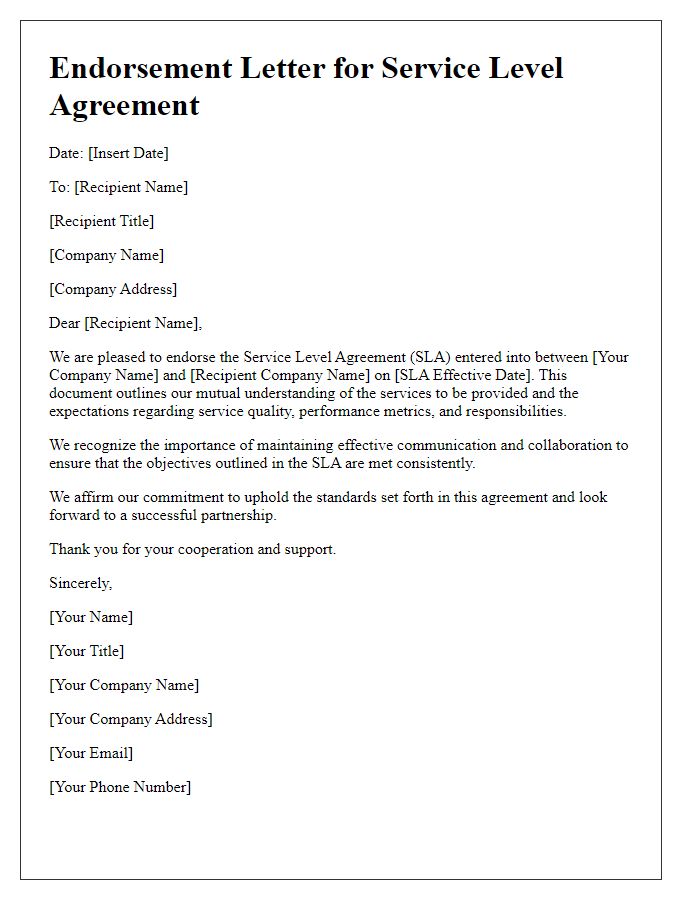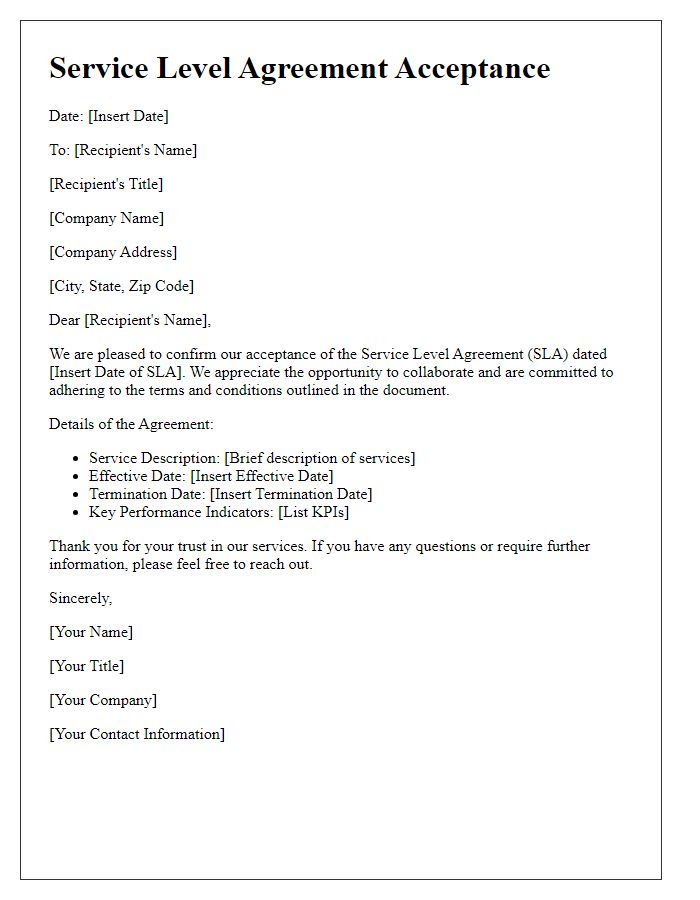When it comes to ensuring smooth operations between partners, establishing a Service Level Agreement (SLA) is a crucial step. It sets clear expectations, defines responsibilities, and helps foster trust in the business relationship. Crafting an effective SLA can seem daunting, but the right template can make the process much easier. Ready to dive into the essentials of creating an SLA that works for you?

Parties' Contact Information
Establishing a Service Level Agreement (SLA) requires precise detailing of parties involved, including their contact information. Noteworthy entities include the primary service provider, often a company or organization responsible for delivering the services, and the client, who receives those services. Each party must provide their official business address, including city, state, and zip code, which are vital for legal correspondence. Contact persons should be identified, including full names, roles or titles within the organization, direct phone numbers, and email addresses. This data ensures efficient communication and clarity on responsibilities defined in the SLA, such as service expectations, performance metrics, and potential penalties for non-compliance.
Scope of Services
The Scope of Services in a Service Level Agreement (SLA) outlines the specific responsibilities and deliverables expected from the service provider in a contractual relationship. This section typically includes details such as the types of services provided, their frequency, and the standards of performance required. For instance, IT support services may include 24/7 help desk availability, regular system maintenance every month, and response times for critical issues not exceeding one hour. Additionally, the SLA may specify quantitative metrics for service quality, such as uptime percentages (e.g., 99.9% uptime for hosted services), to ensure accountability. Clearly defining the Scope of Services is essential for establishing mutual understanding and expectations between parties involved in the agreement.
Performance Metrics
Service Level Agreements (SLAs) provide a crucial framework for defining performance metrics that gauge the effectiveness and reliability of services rendered. Performance metrics, such as response time, uptime percentages, and resolution deadlines, serve as quantifiable standards, detailing expectations for both service providers and clients. For instance, a common metric might stipulate that the response time for critical incidents should not exceed one hour, while system uptime should maintain a level of 99.9%, allowing for minimal downtime. In sectors like IT support, key performance indicators (KPIs) such as first-call resolution rates and customer satisfaction scores can significantly influence service quality assessments. Establishing these metrics requires a thorough understanding of operational capabilities, client expectations, and industry standards to ensure mutual accountability and satisfaction within the service relationship.
Roles and Responsibilities
Establishing a Service Level Agreement (SLA) requires a clear definition of roles and responsibilities to ensure accountability and clarity. The service provider must outline specific obligations such as availability percentages (typically 99.9% uptime) and response times for support requests (e.g., within two hours). Clients must maintain open communication by reporting issues promptly and providing necessary access to systems. Designated personnel such as the SLA Manager will oversee compliance, while technical support teams will be tasked with troubleshooting and resolution processes. Regular review meetings, scheduled quarterly, will assess performance metrics and facilitate adjustments as needed, ensuring both parties uphold their commitments to meet service standards effectively.
Dispute Resolution Procedures
Service level agreements (SLAs) outline expectations and responsibilities between parties, often in business contexts involving IT services or vendor relationships. Effective dispute resolution procedures ensure that disagreements can be addressed promptly, preventing escalation. A systematic process may involve communication channels, such as designated representatives or escalation hierarchies. Timeframes are critical; for example, a typical timeframe for initial resolution attempts may be defined as 5 business days. Formal mediation processes can be arranged, potentially involving third-party mediators or legal counsel. Establishing a clear framework minimizes potential disruptions and fosters long-term collaboration. Documenting all procedures, including agreed timelines and points of contact, is essential for accountability and clarity in dispute management.













Comments